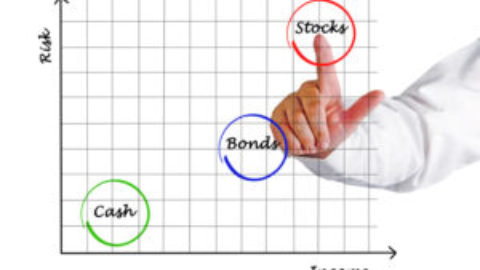Over-Heated Frothy Bubbles
 It seems the words “bubble”, “over-heated” and “frothy” are all adjectives I’m hearing to describe the U.S. stock markets. I see the headlines…. stocks are setting records, seemingly every day. There is no doubt people are getting anxious about some sort of market catastrophe. Why? The reality is, as Scott Minerd of Guggenheim puts it, “markets don’t die of old age, they die because of policy and systemic mistakes” There are some things we need to be very conscious of, but let’s put this “Over-Heated, Frothy Bubble” in context. Since October of 2007, the last bull market peak, the Dow has returned about 2.8% per year. Over the last 10 years the market has returned about 6.5% per year and since the year 2000, the DOW has enjoyed about a 4% return. Since the year 2000, the DOW has grown at roughly the same pace as the total economy, and nobody (Google it) is saying the economy is an “Over-Heated Frothy Bubble”. And if the DOW inflated at the same rate as the National Debt since 2000, it would be at about 35,000. All of a sudden this beaming tower of excess that is the DOW doesn’t seem so tall. In fact, the returns for the first 14 1/2 years of the 21st century may seem down right pathetic.
It seems the words “bubble”, “over-heated” and “frothy” are all adjectives I’m hearing to describe the U.S. stock markets. I see the headlines…. stocks are setting records, seemingly every day. There is no doubt people are getting anxious about some sort of market catastrophe. Why? The reality is, as Scott Minerd of Guggenheim puts it, “markets don’t die of old age, they die because of policy and systemic mistakes” There are some things we need to be very conscious of, but let’s put this “Over-Heated, Frothy Bubble” in context. Since October of 2007, the last bull market peak, the Dow has returned about 2.8% per year. Over the last 10 years the market has returned about 6.5% per year and since the year 2000, the DOW has enjoyed about a 4% return. Since the year 2000, the DOW has grown at roughly the same pace as the total economy, and nobody (Google it) is saying the economy is an “Over-Heated Frothy Bubble”. And if the DOW inflated at the same rate as the National Debt since 2000, it would be at about 35,000. All of a sudden this beaming tower of excess that is the DOW doesn’t seem so tall. In fact, the returns for the first 14 1/2 years of the 21st century may seem down right pathetic.
March of 2009 represented the point of capitulation when the last holdouts tossed in their collective towels. The DOW touched it’s bear market low of just over 6000 and began it’s consistent climb out of a deep hole. For many the “Great Recession” represented their financial awakening. For the first time, we watched the chaos unfold on our smartphones as financial TV personalities became celebrities. Adding to the spectacle, this all came during (or maybe because of?) the most high profile presidential election ever.  So, if you “discovered yourself” financially, around 2009, all you now is that market volatility means markets go up at varying degrees, steady or fast. So the DOW is up almost 275% since March of 2009, from that perspective it has come a long way, but raising the Titanic back to the ocean surface doesn’t make it an airplane.
So, if you “discovered yourself” financially, around 2009, all you now is that market volatility means markets go up at varying degrees, steady or fast. So the DOW is up almost 275% since March of 2009, from that perspective it has come a long way, but raising the Titanic back to the ocean surface doesn’t make it an airplane.
I think an argument can be made that stocks represent compressed opportunity. Technology and innovation have been stunning, possibly at the expense of employment. Companies are holding massive amounts of cash, as are investors. Does this mean clear skies and smooth sailing? Nope. The Federal Reserve is redefining its role and nobody knows exactly what that means. The Fed, once a supporting role player in the market, has now amassed a $5 trillion balance sheet, is apparently able to manipulate the entire yield curve, and now for the first time has decided to provide commentary on the investment merit of specific industries. I think I’d join the collective industry onlookers when I say, “I have no clue how this is going to work.” So what about inflation? The Fed’s historical role has been to provide a check on inflation through monetary policy. Can or will they continue to manage inflation as their primary function? This is one of our primary concerns. Inflation is a function of supply and demand, not politics. Only 3% inflation will devalue the spending power of a dollar by 50% over 24 years. It’ll take just 14 years for $1 in your mattress to be worth 50 cents. So leave your political banter at the bar and focus on what the real risks to your goals are and how to best address those risks. Low interests rates can be painful. Inflation can be painful. Combined, they can be devastating.
I will leave you with this; imagine it’s August of 2024. if the last 10 years of market returns were a ho-hum 7% the DOW is at about 34,000. What did you do? What happened to Ukraine, Greece or Spain, did Yellow Stone Explode? Likely not.










